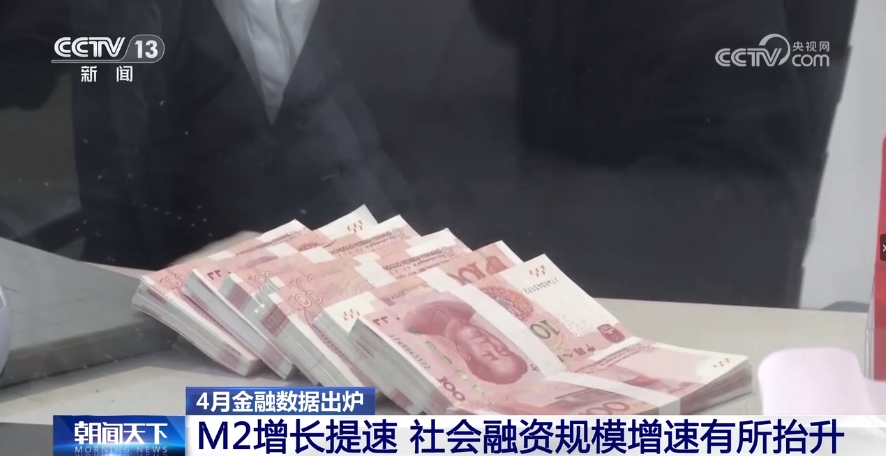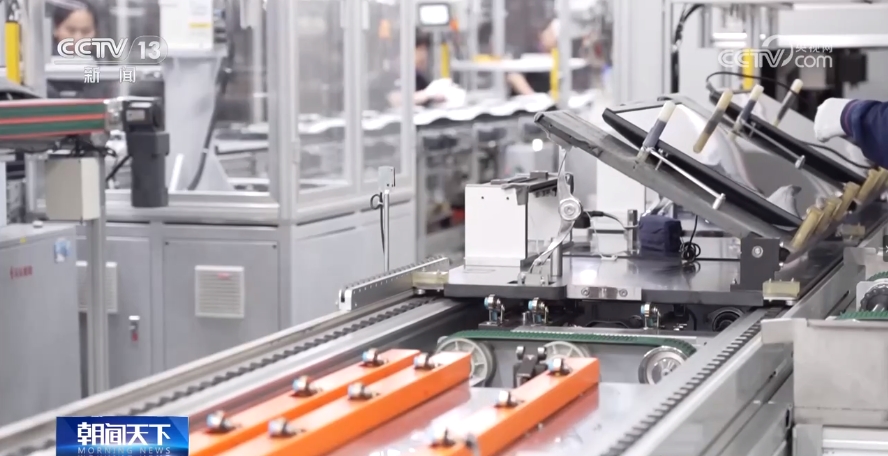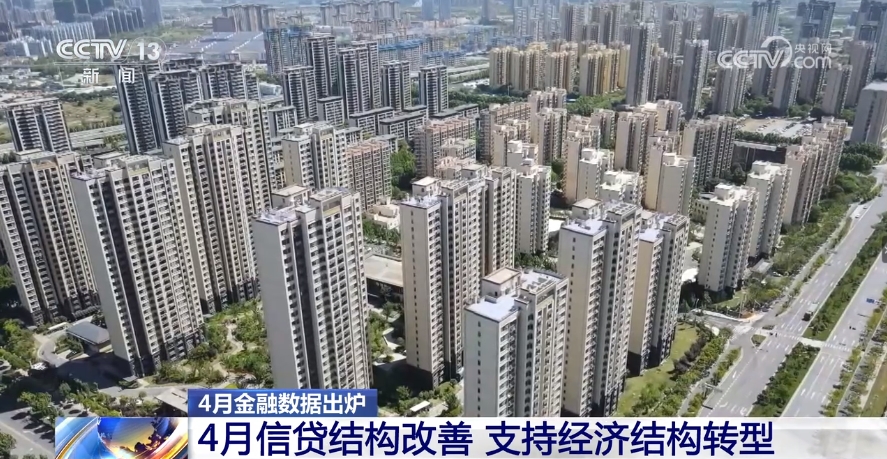CCTV News: The People's Bank of China released April financial data on the 14th. Data shows that the growth of total financial volume is both "stable" and "real", the growth of broad currency M2 has accelerated significantly, and the scale of social financing remains at a high level.
M2 growth has accelerated, and the growth rate of social financing has increased
Data shows that at the end of April, the balance of broad money M2 was about 325 trillion yuan, an increase of 8.0% year-on-year, maintaining a relatively high level. The stock of social financing is about 424 trillion yuan, an increase of 8.7% year-on-year. The growth rate of social financing has increased, and support for the real economy has increased.

Experts said that the acceleration of government bond issuance is the main driving factor.
Experts said that this year, financial support is strong and bond issuance is fast, supporting the expansion of domestic demand and loose credit, which has provided strong support for the scale of social financing.
Credit still maintains rapid growth and strongly supports the real economy
Data shows that from January to April, various RMB loans increased by 10.06 trillion yuan, and credit still maintains rapid growth.

Experts said that at the end of April, the growth rate of RMB loans was still significantly higher than the nominal economic growth rate. After restoring the impact of local debt replacement, loan support is actually higher than statistics.
At the same time, financing costs continue to maintain historically low levels. In April, the weighted average interest rate of newly issued loans by enterprises was about 3.2%, about 4 basis points lower than last month, and the weighted average interest rate of newly issued loans by individual housing was about 3.1%.
The credit structure improved in April to support the transformation of the economic structure
Data shows that in April, inclusive small and micro loans and medium- and long-term loans in manufacturing increased by 11.9% and 8.5% year-on-year respectively, both higher than the growth rate of various loans during the same period. The credit structure continued to improve, supporting the transformation of the economic structure.
Data shows that the investment direction of my country's credit increment has changed significantly, driving the structure of credit stocks to be optimized.

From the perspective of enterprises and residents, from the beginning of 2021 to the present, the proportion of enterprise loans has increased from about 63% to about 68%, and the proportion of residents' loans has correspondingly dropped from about 37% to about 32%. Behind the rise and fall, it shows that more credit funds are invested in real enterprises, and the decline in residents' financing demand is also related to the more rational investment in house buying and investment.
By enterprise type, from the beginning of 2021 to the present, the proportion of small and micro enterprises in all enterprise loans has increased from about 31% to about 38%, and the proportion of loans to large and medium-sized enterprises has dropped from about 69% to about 62%.
In addition, from the perspective of industry investment, from the beginning of 2021 to the present, among all medium- and long-term loans, the proportion of manufacturing has increased from 5.1% to about 9.3%, the proportion of consumer industries has increased from 9.6% to about 11.2%, while the proportion of traditional real estate and construction industries has dropped from 15.9% to about 13%. Financial institutions invest more credit resources in the fields of manufacturing and technological innovation, and increase financial support for key consumer industries such as accommodation and catering, culture, sports and entertainment, education and training, and the proportion of loans in related industries has increased significantly.